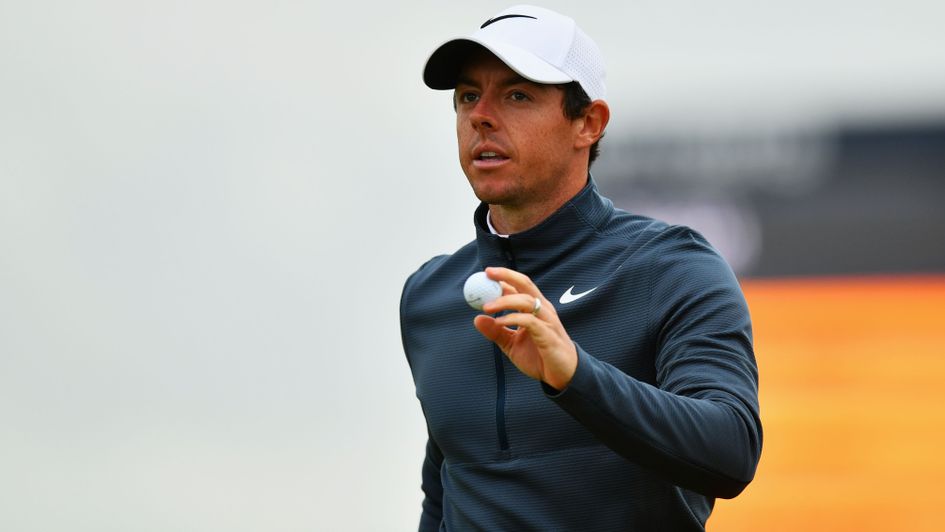Ben Coley reflects on a significant day for Rory McIlroy in his bid to land a second Claret Jug.
Open Championship: Related content
Ben Coley's live blog and latest leaders
By Ben Coley at Royal Birkdale
On Friday at the Open Championship, Rory McIlroy did something more significant than sign for a two-under 68 that put him firmly in the hunt for a second Claret Jug.
He remembered how to score.
McIlroy didn’t play all that badly over the first six holes on Thursday, but he was five-over. He played nicely for the rest of the round, spurred on by some harsh words from his caddie, and appeared to get exactly what he deserved for each of the shots he hit.
That continued into Friday, a towering approach to the difficult sixth perhaps the best example of what Rory can do when everything is working at the same time. For nine holes, this was McIlroy in something approaching full flight.
Then came a change, triggered by a tee-shot at 10 which went further than he could believe. From this point onwards – fairway bunker to fairway, green to hole – McIlroy was in a major battle.
Click here to back Rory McIlroy for the Open Championship
And, for the first time since perhaps even the 2014 PGA Championship, it was a battle he resoundingly won, coming home in a one-over 37 which could and should have been significantly higher.
Three years ago at Valhalla, McIlroy was by far and away the world’s best player. He was playing at a long, soft golf course in Kentucky, the type of Jack Nicklaus design he was built to destroy, and nobody could’ve claimed surprise when he moved into the lead.
After all, McIlroy had won the Open and followed up at Firestone. A fourth major championship was the natural next step.
This sport being so fickle, however, things didn’t go to plan early in the final round. Much like Thursday at the Open, iffy shots triggered harsh consequences. To any other player at any time other than Sunday at a major championship, it would’ve been labelled simply one of those days.
But McIlroy fought for his score.
Fortunate, yes, to neck a three-wood to eagle range at the 10th, but from then able to do what he needed to do to win. This was not an audacious display of near-perfection like the first two, nor the ultimately comfortable first Open.
It was a battle, both with world-class opponents and a misbehaving swing. It’s why, after winning, the consensus was that McIlroy would add more and soon.
Now, at last, the prettiest golfer in the land could win ugly.
There’s work to do before he can win ugly this week, and scope of course for him to win pretty. One commentator compared his performance to that of Tiger Woods at the 1997 Masters, when Woods went out in 40 and ultimately won by 12 shots. Such an eventuality appears unlikely, but McIlroy is firmly in this tournament and no mistake.
He’s in it because on 10, he managed to escape a fairway bunker with par. He scrambled another on 11, got up and down from sand on 12, and while unable to salvage another on 13, gave a shot back only on the hole which was playing to an average of five.
In other words, he made a revised par and the damage was limited.
Again at 14, he made par despite missing the green left, and even a six on the par-five 15th represented some kind of achievement after a wayward drive and two hacks to get the ball back in play.
McIlroy finally found another fairway at 16, but pulled his wedge long and through the green. Again, he made par. And then on 17, he was able to make amends for what went wrong two holes earlier, consuming this dangerous par-five as he does when he wins.
Only Zach Johnson bettered McIlroy’s score on Friday, and given the way he finished on Thursday, the temptation here is to conclude that the Northern Irishman is back to where he belongs.
Yet that was not the case. McIlroy was scrapping, just as in Ireland, just as in Scotland. Only this time, he won.






